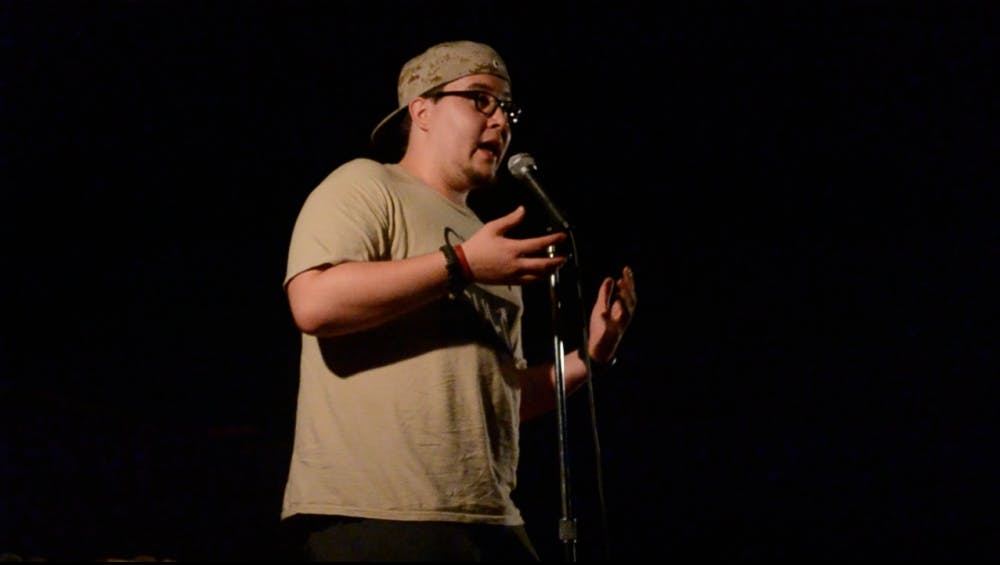 Journalism freshman Jack Wilson spins a yarn at Lawn Gnome Publishing. The event happens every week in downtown Phoenix and the art of Yarnball Storytelling can consist of rehearsed or improvised storytelling. (Photo by Adiranna Ovnicek)
Journalism freshman Jack Wilson spins a yarn at Lawn Gnome Publishing. The event happens every week in downtown Phoenix and the art of Yarnball Storytelling can consist of rehearsed or improvised storytelling. (Photo by Adiranna Ovnicek)On the steps of Lawn Gnome Publishing, Don Hull reaches into his bag to remove a small taxidermied cat. He begins to laugh.
"I'm not usually a prop guy," Hull said.
The small animal had been permanently arranged into a peaceful sleeping position with its eyes closed and tail tucked. "Tiger" served as the subject of Wednesday's Yarnball Storytelling, which Hull hosts.
Hull brought storytelling from New York to Lawn Gnome Publishing, where owner Aaron Hopkins-Johnson agreed to host the event. In some circles, the craft has recently gained respect as an art form on par with stand-up comedy and slam poetry.
“Phoenix has its own comedy scene, but it doesn’t have its own storytelling scene,” Hull said. “Storytelling is a little different. It’s kind of a newer thing to do.”
Yarnball Storytelling is held every Wednesday at Lawn Gnome Publishing. From 8 p.m. to 10 p.m., Hull opens the stage to students, local poets and audience members for a series of six-minute stories, some rehearsed and some not.
A storytelling audience is encouraged to give feedback and contribute to the show’s theme, making the entire experience incredibly interactive.
“Even if you’re not the best storyteller in the world, it’s engaging. It’s interesting,” Hull said. “For about six minutes, it’s just about letting people connect with the moments.”
ASU physics student Sean Sweeney said he attended Lawn Gnome’s storytelling events before he began working there.
“I know a number of people that came here for First Friday and the like, though it certainly is more of a downtown thing,” Sweeney said.
Spinning a yarn onstage offers a freedom that poetry slams don’t. First-timers don’t have to memorize a lengthy poem or rehearse their speech.
“It’s not like you have to spend a dedicated evening writing new poetry,” Hull said.
Both Hopkins-Johnson and Hull have received positive feedback from students who appreciate the event as a cool, creative outlet, and during last year’s series, groups of students made up a portion of the event’s regular attendees.
“When someone is just talking in first person and being themselves onstage in the context of a storytelling mic, people get the fact it’s about connection. People are there to connect with other human beings.”
Reach the reporter at aovnicek@asu.edu or follow her on Twitter @aovnicek




